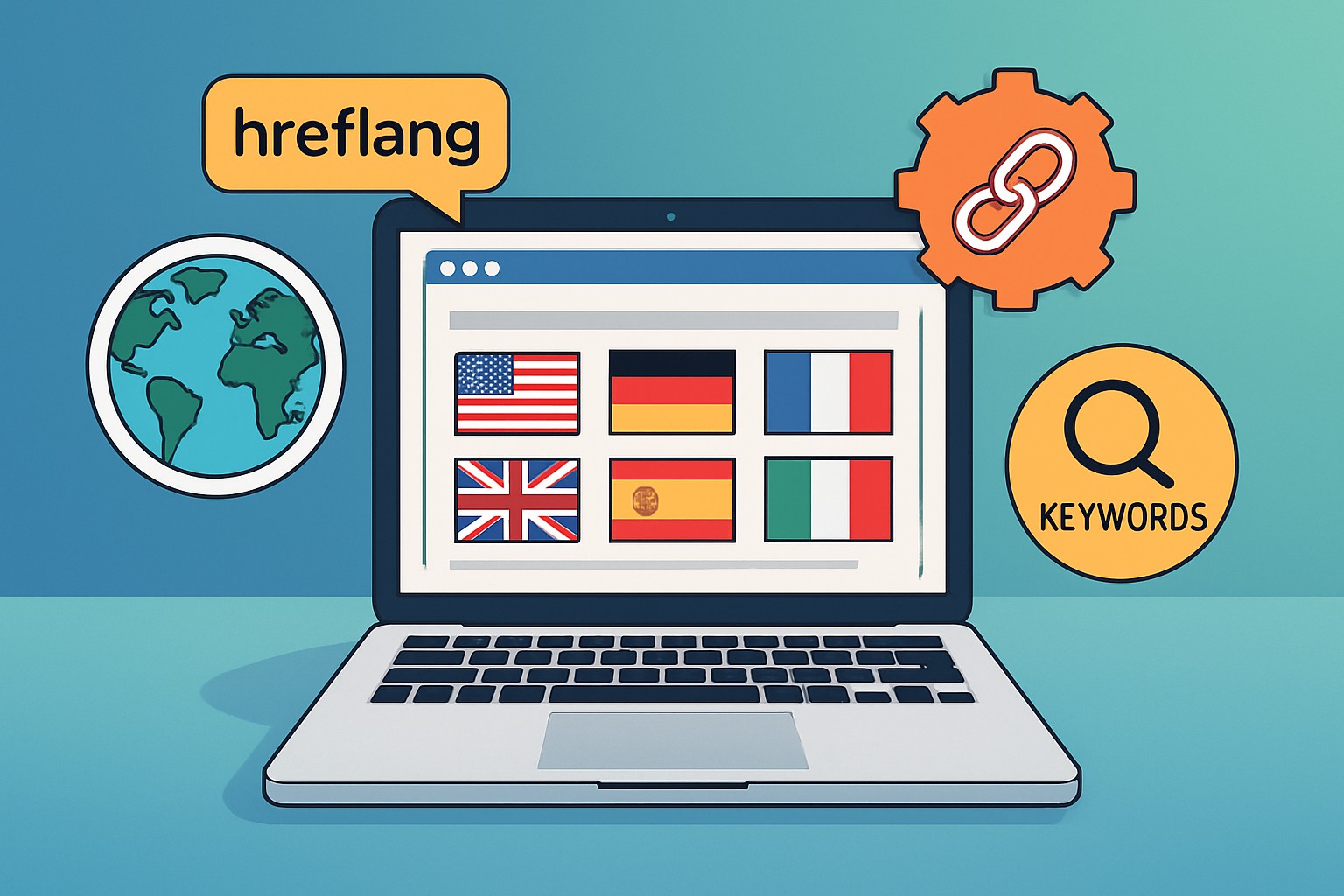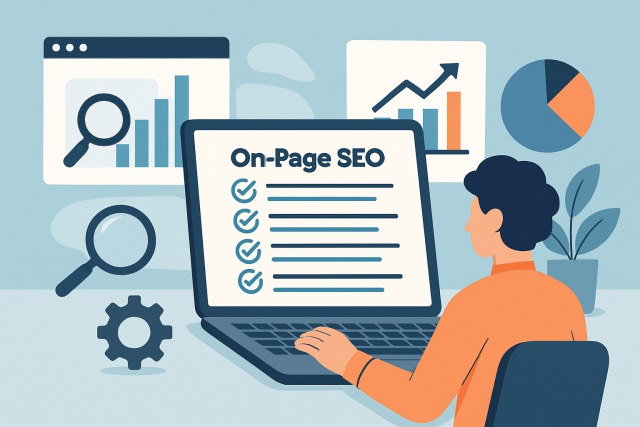Optimize Multilingual SEO for Global Traffic


Multilingual SEO is absolutely important for businesses aiming to make a splash in global markets by tailoring their websites to people who speak a range of different languages. It’s not just about swapping words in one language for another—far from it. It means carefully customizing every nook and cranny of your site to shine on search engines across various language markets.
If a business doesn’t have a clear multilingual SEO strategy in place it usually runs into headaches like poor search visibility, duplicate content penalties and low engagement when trying to connect with international audiences. By taking the time to optimize content for different languages these obstacles can be smoothed out.
Understanding Multilingual SEO and Why It Matters (More Than You Might Think)
Multilingual SEO is about tweaking websites to resonate across different languages and regions while keeping local quirks and search habits in mind. Instead of sticking to the usual SEO playbook, it targets various language groups by carefully choosing keywords that fit each locale like a glove. It uses URL formats that feel right for the local crowd and includes technical hints tailored to what users in those areas want to find.
- Using hreflang tags properly to give search engines a clear heads-up about the intended language and regional audience
- Localizing content in a way that goes far beyond just swapping words, capturing those little cultural nuances and truly understanding what the users mean
- Diving into keyword research that’s carefully tailored to each specific language and dialect because one size definitely doesn’t fit all here
- Tackling the technical SEO side of things by fine-tuning site structure and making sure crawl optimization is spot on for multilingual websites
A few common mistakes tend to pop up now and then like skipping hreflang implementation altogether, which can sneakily cause duplicate content headaches. Another classic slip-up is juggling inconsistent URL structures across different languages. It’s the sort of thing that trips up both users and search engines alike.
Step 1 Kick Things Off with Keyword Research Custom-Made for the Language
Kick off every language SEO campaign by rolling up your sleeves and diving into detailed keyword research that fits the language's unique vocabulary and regional quirks.
- Tap into multilingual keyword research tools like Moz Pro and Mangools to sniff out keywords that boast high search volume but don’t have everyone and their dog fighting over them
- Dive into how search intent shifts from region to region to zero in on the keywords that truly click with local audiences
- Keep a close eye on keyword difficulty and competition levels for each market it pays to be picky here
- Don’t overlook long-tail keywords that really capture the nuances of local language and user intent, they often punch way above their weight
- Stay ahead of the curve by using Google Trends and regional search data to catch fresh keyword waves before they get crowded
Step 2 Fine-Tune Your Website Structure to Better Support Multilingual SEO
Pick a site architecture that truly suits your multilingual content like a glove. You could go with subdirectories, subdomains or country-code top-level domains (example.es). Each option has its own quirks for SEO and management.
| Site Structure | SEO Benefits | Complexity | Localization Potential | Recommended Use Case |
|---|---|---|---|---|
| Subdirectories | Taps into the main domain's authority and tends to be a breeze to manage | Low | Moderate | Ideal for smaller, tight-knit teams who want to keep things simple |
| Subdomains | Lets you zero in on specific regions and neatly keeps languages apart | Medium | High | Perfect for distinct language markets where content really differs |
| ccTLDs | Packs a punch with strong local relevance and gets the nod from local search engines | High | Very High | Top choice for businesses going all in on deep, granular localization |
Make sure to add hreflang tags properly in your website headers or sitemaps so search engines get the memo about the language and geographic focus of each page.
Step 3 Adapt Content for Local Audiences Beyond Just a Straight Translation
Translation on its own often misses the finer cultural nuances and the unique search intent of local users. Smart localization goes a step further by tweaking content to fit local customs and meet user expectations while keeping pace with market trends.
- Sprinkle in local sayings and expressions that click with your audience’s vibe
- Format dates, times and currencies the way locals expect because details like these make all the difference
- Pick visuals and images that vibe with the cultural style so they not only look good but also feel right
- Toss in examples, case studies or references that hit close to home for the local market since it is all about making things relatable
- And of course keep a keen eye on local laws and regulations, especially those pesky privacy policies everyone loves to debate
Work hand in hand with native speakers or seasoned localization pros to craft authentic, SEO-friendly content.
Step 4 Key Technical SEO Aspects for Multilingual Websites
Here’s where things get a bit more interesting. Diving into the nitty-gritty of technical SEO for multilingual sites might feel like a puzzle, but it’s absolutely doable once you get the hang of it. Let’s unpack the essentials that can make or break your site’s performance across different languages.
Technical SEO holds a key spot when it comes to multilingual websites because it ensures each language version is properly indexed, crawled, and runs smoothly. It’s about paying attention to details like setting up sitemaps correctly, managing the crawl budget, keeping page load speeds fast, and making sure the design is mobile-friendly for every language.
- Make sure hreflang annotations are set up just right in your HTML headers and XML sitemaps. Getting this nailed down early saves a headache later
- Use language-specific canonical tags to avoid those pesky duplicate content issues that often trip you up
- Tweak URL parameters carefully so search engines do not get confused when trying to figure things out
- Give your robots.txt file a once-over to confirm every language version is open for crawling because you do not want to unintentionally hide any gems
- Keep your multilingual sitemaps fresh and submit them regularly. This habit really helps with better indexing
- Keep a sharp eye on crawl budgets and do not hesitate to remove orphaned or low-value pages that waste resources for no good reason
Step 5 Build Those Backlinks and Really Cement Your Authority for Each Language Domain
Building links that fit each language and region like a glove usually gives your domain authority and trustworthiness a nice little boost in local search results. It’s a smart move not to put all your eggs in the basket of backlinks pointing just to the main domain.
- Partner up with well-known regional websites and platforms that really know your industry inside out
- Do not forget to list your site on local business directories and citation services where it counts
- Join forces with influencers and bloggers who have the ears of your target markets to give your visibility a much-needed nudge
- Pitch in guest posts to localized blogs or media outlets that have their fingers on the pulse of the audiences you are after
Common Challenges and How We Can Tackle Them Together
Handling multilingual SEO can really stretch your resources thin and tends to throw a wrench into workflows, creating bottlenecks when juggling multiple languages simultaneously.
- Automate routine tasks like adding hreflang tags and updating sitemaps whenever you get the chance because it saves a headache down the line
- Opt for CMS platforms with built-in multilingual support since it eases managing content across different languages
- Make it a habit to schedule regular SEO audits so you can catch and fix issues before they become bigger problems
- Lean on professional translation management systems to keep quality high and consistency tight because nobody likes a patchy message
Unlock Digital Marketing Success with Moz
Struggling to optimize your online presence? Moz is the ultimate Internet Marketing solution, empowering businesses with powerful SEO tools, insightful analytics, and expert guidance. Elevate your digital strategies and outshine the competition.
- Boost organic traffic with data-driven SEO tactics
- Enhance content marketing with expert recommendations
- Gain a competitive edge with comprehensive link analysis








